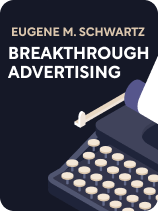

This article is an excerpt from the Shortform book guide to "Breakthrough Advertising" by Eugene M. Schwartz. Shortform has the world's best summaries and analyses of books you should be reading.
Like this article? Sign up for a free trial here.
What is product superiority? What is the key to beating the competition?
In marketing, product superiority is the slight differences between similar products that can make one product seem better than the other. In Breakthrough Advertising, Eugene M. Schwartz gives a few tips for convincing customers that your product is superior to the competition.
Let’s look at the three ways you can write a headline that highlights your product superiority.
1. Make Your Headline Simple
According to Schwartz, one way to show off your product superiority is to be direct and honest with your customers. If customers aren’t aware of similar versions of your product, your headline should be as simple and direct as possible. For example, “Finally, an effortless way to find love!”
(Shortform note: Schwartz implies that having no competition makes it easier to attract customers. While there’s some truth to the claim, William M. Luther (The Marketing Plan) warns that there are higher costs involved in marketing a product that faces no competition. He explains that customers rely on what’s already in the market to provide the context they need to understand a product’s benefits. Without this understanding, they have no interest in the product. Therefore, businesses have to focus their marketing efforts on educating customers about why they should want the product before they can sell it. This results in higher costs because existing competitors would have already educated customers and built demand.)
2. Expand on Competitor’s Headline
If customers are aware of a few similar versions of your product, Schwartz suggests that, instead of inventing a new headline to obtain product superiority, you simply expand on your competitors’ headlines and elaborate on why your product is better than all other versions. For example, if a competitor uses the headline, “An easy way to find love,” you can expand on their claim with: “The fastest and easiest way to find love.”
If customers are aware of many versions of your product, they won’t be as receptive to new advertisements—because they’ve already heard all of the claims and have lost interest in this type of product. Schwartz suggests two ways your headline can revive customer interest in your product:
- Emphasize a new, distinct benefit to distinguish your product from what’s currently on the market. For example, “The only app to guarantee your perfect match in under 60 seconds!”
- Express an emotion or attitude to appeal to these customers. For example, “For those who know that life should be better.”
(Shortform note: While the three research methods Schwartz suggests may help to distinguish your product, they’re unlikely to change how customers feel about the first competing product they learned about. According to Al Ries and Jack Trout (The 22 Immutable Laws of Marketing), when consumers learn about a new product, they unconsciously perceive the brand that first introduced the product as synonymous with the product itself. For example, people often refer to tissues as Kleenex—because Kleenex was the first brand to offer facial tissues. This form of attachment makes it difficult for new brands to change how customers feel about established brands with existing products—even if the new brands offer superior products.)
3. Emphasize Your Product’s Superiority
Schwartz suggests that you point out weaknesses in competitors’ products and emphasize your product’s superiority to demonstrate that it’s the best option. This is effective because the more aware customers are of competitors’ products, the more help they need distinguishing between these products to figure out the best option. Therefore, emphasizing all of the ways your product does a better job than what competitors offer helps customers judge your product as the best option. For example, “Unlike other apps, we ensure user profiles are accurate so that you always know who you’re meeting.”
(Shortform note: According to Luther (The Marketing Plan), instead of focusing solely on what makes your product superior to competing products, you should also emphasize what your business does better than your competitors. This will help differentiate both your product and your business in a way that appeals to customers. To achieve this, consider how you want customers to perceive your business and what will influence them to choose you over competitors. For example, brands that target eco-conscious customers emphasize how much they donate to environmental programs. This implies that they’re more environmentally friendly than other businesses and that they care more about what matters to customers.)

———End of Preview———
Like what you just read? Read the rest of the world's best book summary and analysis of Eugene M. Schwartz's "Breakthrough Advertising" at Shortform.
Here's what you'll find in our full Breakthrough Advertising summary:
- Why the headline is the most important component of an advertisement
- Specific techniques you can use to create captivating headlines
- Persuasive methods you can apply to write compelling copy






